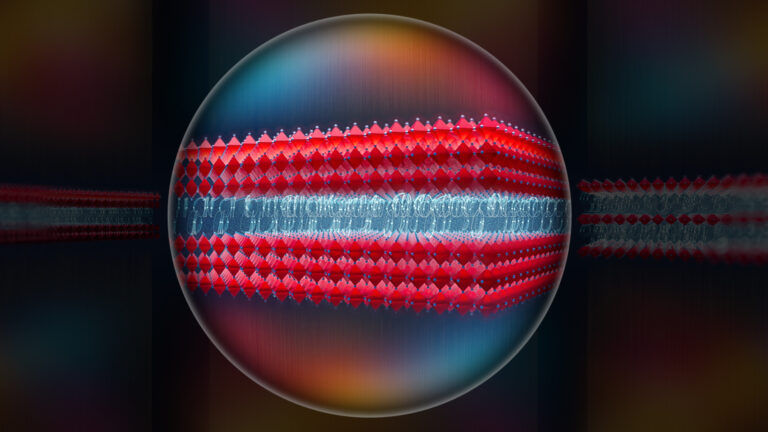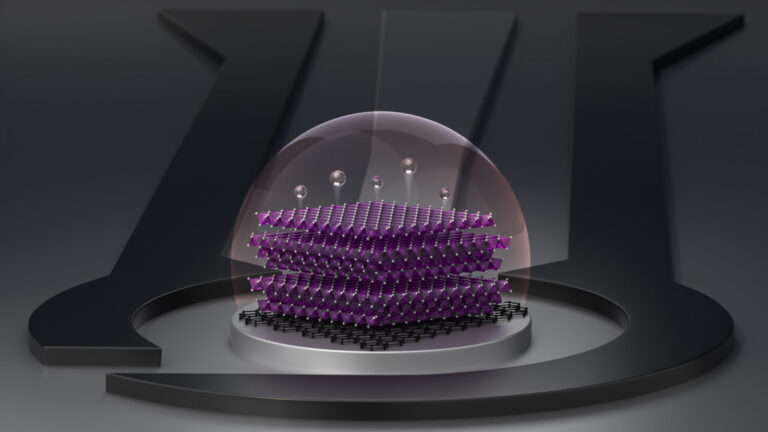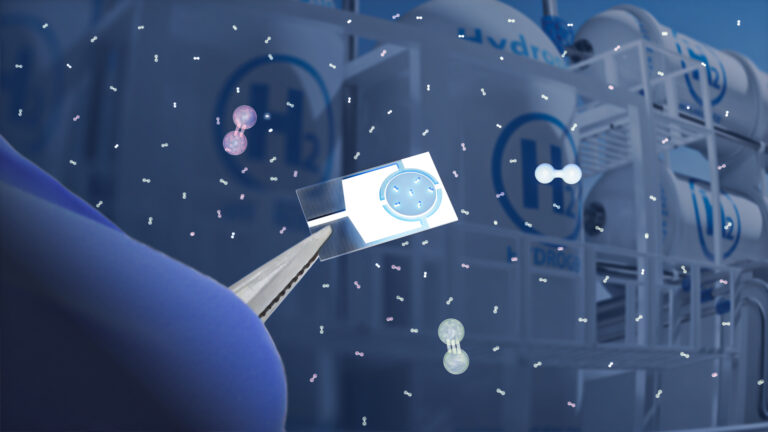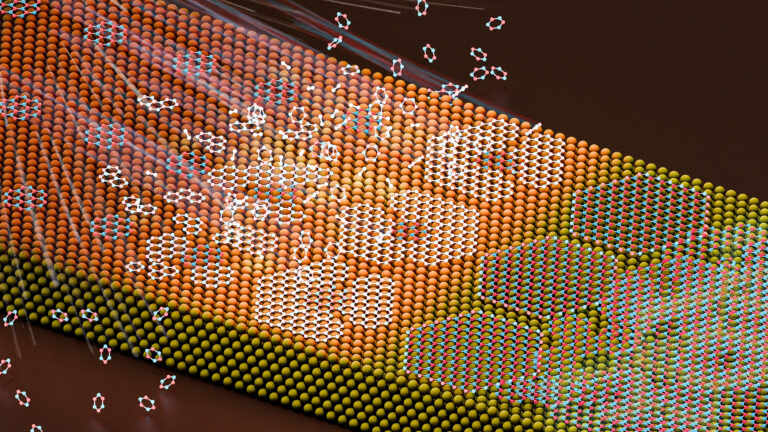Material Science and Engineering
The heat is on for thermoelectric power
Layered MXene semiconductors enable efficient thermoelectric power generators.


The MXene crystal structure from the side and the top. The M, C and O atoms are shown by the blue, brown and red spheres, respectively.
Reproduced with permission from reference 1© 2016 American Chemical Society
Heat is an unwanted byproduct of many processes that reduces overall efficiency and demands cooling of the apparatus. In many circumstances, such as for car engines, this heat can be utilized, for example by converting it into electricity. Researchers from KAUST have demonstrated that a class of semiconductor materials, the MXenes, could be used for such applications1.
MXenes are layered materials that consist of metals (M), carbon (C) and functional groups. Examples of semiconducting MXenes are Ti2CO2 and Hf2CO2. Their semiconducting nature makes them promising candidates for thermoelectric applications, in which heat is converted into electricity.
To be a good thermoelectric, a material needs to optimize competing properties—it must be a good electrical conductor while at the same time it needs to be a poor heat conductor. Balancing these requirements has proven difficult, and there are intensive research activities into new and improved thermoelectric materials. Whereas electrical conduction is determined by electrons, heat conductivity is determined by phonons, which describe the vibrations of the material’s atoms. Atomic vibrations conduct heat.
The research team investigated the transport of phonons in MXenes using highly accurate numerical simulations of a series of MXenes materials that differ only in the type of metallic atom. The computations compare electron and phonon transport across the material and show that the phonon transport and thus thermal conductivity is lowest in Ti2CO2, but is higher in other MXenes such as Hf2CO2.
“For the first time we were able to show that the experimentally available semiconducting MXene Ti2CO2 is a promising thermoelectric material,” said Udo Schwingenschlögl, who led the research team. “The best thermoelectric performance is found around 400 degrees Celsius, which is a typical temperature of exhaust heat.”
The thermoelectric properties also depend on the type of impurities added to these semiconductors to improve their electrical conductivity. This doping creates a surplus of either positive or negative charges in the crystal and thus enhances electrical conductivity. For the MXenes, the calculations demonstrate that doping with negative charge carriers gives a better thermoelectric performance.
The possibility to use numerical simulations to study the thermoelectric performance of a broad range of MXenes with different properties provides a pathway towards a broad and systematic investigation into viable thermoelectric materials for applications, added Schwingenschlögl.
“We are searching for approaches to improve the thermoelectric performance of MXenes. Our predictions can guide experiments on the way to realizing MXene-based thermoelectric devices,” he said.
References
- Gandi, A.N., Alshareef, H.N. & Schwingenschlögl, U. Thermoelectric performance of the MXenes M2CO2 (M = Ti, Zr, or Hf). Chemistry of Materials 28, 1647–1652 (2016).| article
You might also like

Material Science and Engineering
Electron movie guides design of layered perovskite materials

Material Science and Engineering
Remote region sensor for essential vitamin deficiency

Material Science and Engineering
Low-power hydrogen sensor detects leaks in an instant

Material Science and Engineering
Illuminating pathways to long-lived organic solar cells

Chemistry
Beating the dark current for safer X-ray imaging

Chemical Engineering
Net benefits for advanced materials design

Material Science and Engineering
Atom-thin insulator grown into perfect films

Material Science and Engineering



